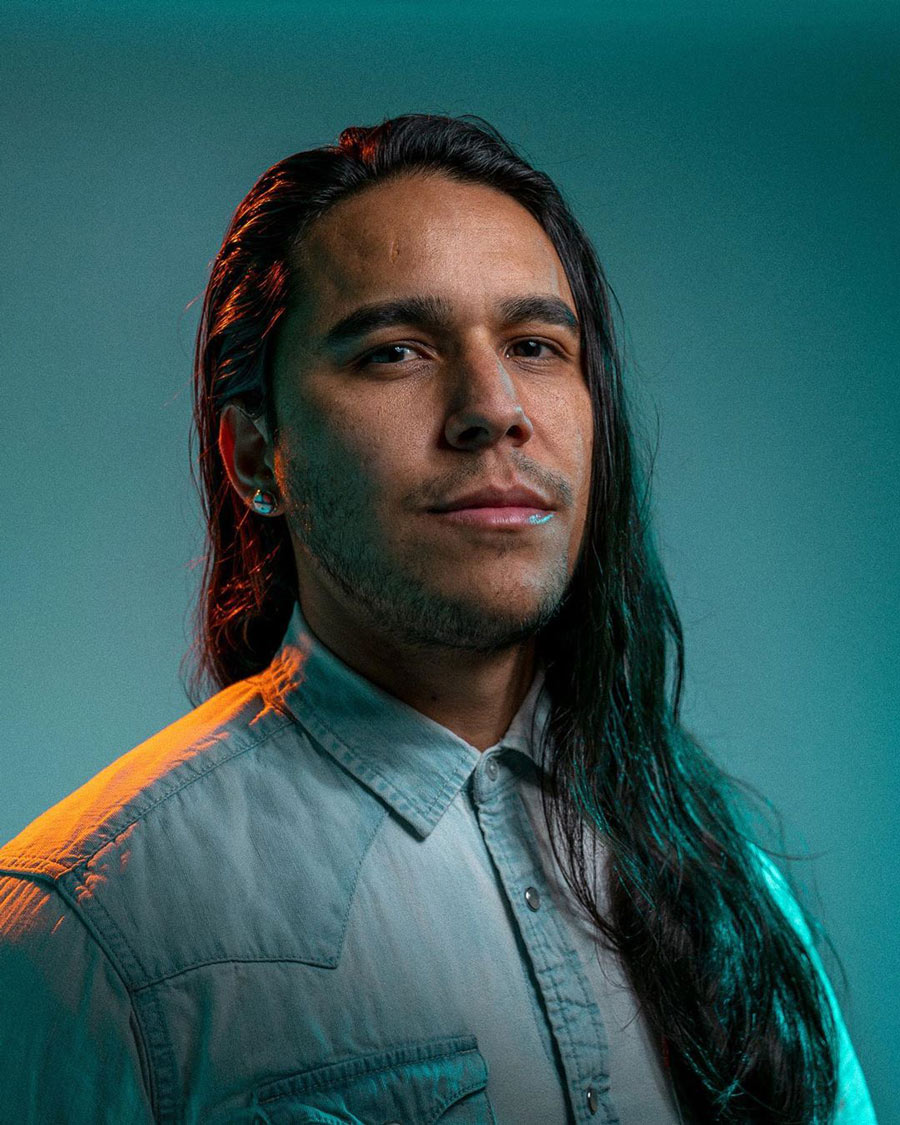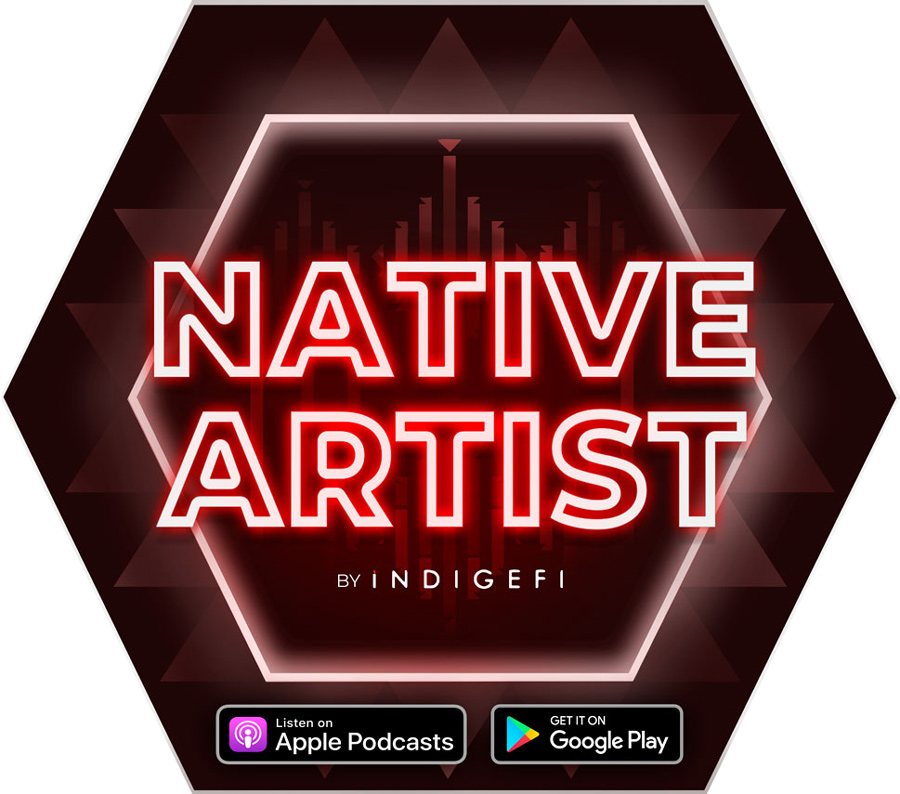medium for telling Native stories


lexis Sallee (Iñupiaq), who is also Mexican American, is the host of Indigefi, a weekly one-hour radio show featuring Indigenous music that includes emerging and popular artists and music. More recently Alexis has ventured into a new podcasting media endeavor. In May, her podcast “Native Artists by Indigefi” premiered.
Alexis grew up in Anchorage and joined KNBA after graduating high school. While at KNBA she worked as a sound editor for the radio program, Earthsongs for two years. While there she worked alongside Shyanne Beatty (Athabascan), a local radio personality, learning about the technical aspects of producing radio.
Shyanne worked with KNBA for more than seven years as the Network Manager for Native Voice One (NV1) which distributes Native radio programming nationwide. The experience for Alexis had an influential impression, urging her to learn more about the radio business.
Alexis later earned a Bachelor of Science degree in Recording Arts from Full Sail University in Winter Park, FL. She currently lives in Los Angeles where she works in the audio post-production industry. Alexis had been captivated with subscribing to podcasts that spoke to her and more importantly she could listen at any time.
“I started listening to comedy; there are a ton of comedians that I love who podcast now,” said Alexis, when asked about starting in podcasting. “It was fun listening to people’s unedited versions of their lives. I became almost religious about listening; every Monday I’d have to catch this podcast or that one. Once you subscribe to a podcast and it comes out it will download to your phone and listen whenever it’s convenient. With a radio station, you have to tune in at a certain time.”
Alexis especially enjoys the flexibility and expansiveness podcasts offer.
“What’s cool about podcasts versus radio is there are no restrictions,” she said. “Podcasting has definitely been a learning and growing opportunity for me because I come from radio. With radio, there’s a certain design and you have to cut away at certain times. With podcasting, you can do whatever you want to do. So understanding how to formulate a podcast was so interesting.”
“A podcast is typically an episodic digital recording that a user can download to a smartphone or other device. The draw is a person can subscribe to them and listen whenever you’d like. The shows can cover wildly diverse topics, interviews, and personalities. Whatever you are into you can probably find it as a podcast.”
Alexis began hosting the recently launched “Native Artist” podcast to explore the stories of Indigenous artists, with a wide range of creative backgrounds and mediums. She’s already interviewed several amazing Native artists, examining their unique stories and perspectives. You can find her podcast and whom she’s interviewed at nativeartistpodcast.com.
“I’ve heard a lot of podcasts really taking off, people were getting a ton of listeners and monetizing on those commercial podcasts,” said Alexis. “We got to develop a podcast on emerging Native artists. We decided to call the show what it is, Native Artists. The best branding is based on what the thing is, these are Native artists, this is a Native artist’s podcast.”
Her first podcast with Tomás Karmelo Amaya (Yoeme, A:shiwi, and Rarámuri) highlighted his work as a filmmaker, photographer, writer, and the current creative director at Indian Country Today. He was born and lives in Phoenix, Ariz.. Tomás’s work has been published by The New York Times, The Sundance Institute, Buzzfeed, and numerous other publications.
“In my creative journey, I’ve had amazing conversations with other artists where we’re just talking about the business of art, which [many artists] don’t talk about a lot,” said Alexis. “People who maybe have been artists their whole lives and they just don’t know it, but really they just don’t know the business aspects of it. That is what Tomás and I talk about in this first episode.”
Alexis discusses her perspective as an artist, a filmmaker, and as an audio engineer, “I’m very creative and I’m always conceptualizing and developing new projects, in my creative journey. While I’m also an Indigenous person I don’t represent all Indigenous people.”
Alexis and Tomás also discuss some of the frequent misconceptions and assumptions they’ve experienced. They mention the importance to frame conversations around the nuances of a Native person’s and family’s specific cultures and traditions.
Certainly, at the heart of podcasting is storytelling and that is a tradition that many Alaska Native and American Indian people have in common. More than that, however, podcasting can amplify a person’s voice like a cultural force multiplier. With so many uninformed or misinformed narratives an authentic voice is important to hear.

While Native communities are generally underrepresented in the media, podcasting offers an accessible voice to the public with a recording microphone and smartphone. There is more to it, but these are the basic tools needed.
As Alexis shared, these podcasts are the voices of Native artists; it is a Native artist’s podcast. Alexis shares her perspective.
“With podcasting, it’s not like the radio, it’s individual listeners,” she said. “Podcasting has really taken off. I don’t even have a radio in my house. There is so much power in podcasting, it’s accessible.”
Just as any media can entertain it can be hosted by others with similar experiences or a voice from a completely different worldview. When that narrative is authentic, it can be inspirational, educational, and just maybe something you’d want to subscribe to.
